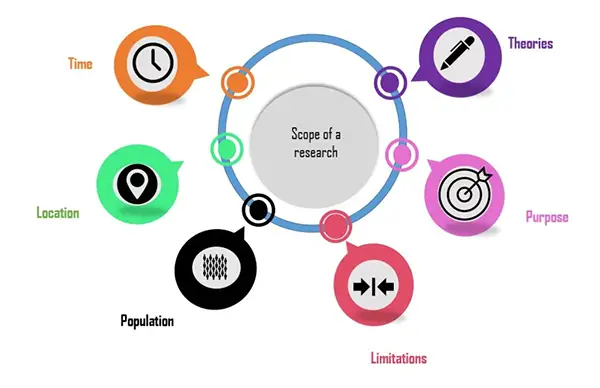In academics, research papers play a significant role. If you are a student, it becomes very important to curate your paper descriptively and clearly to the reader which builds an impression on their mind. In case you are struggling or are not able to curate one for yourself, you can search for research papers help online where a number of expert writers are happy to help you. While in this article, you will get to learn how to structure an effective research paper and how to write its summary, overview and introduction in the way it leaves an impact.

Setting the context means building up a base on which your strong and impactful research paper can stand. Draw the attention of the reader towards your subject. Follow the given steps and try to imply them in your writing.

You must also hate things that are out of context. Similarly, you would not want your reader to feel that way. While curating an introduction for your writing, explain the importance and its relevancy in the real world. Make them realise how important it is to learn about the topic. Give it a light start with a greeting and establish a connection with the reader.
Your research is unique in its own way. It holds its own significance among all others. Make your reader feel this way. Thoroughly explain why your article will add value to their learning. Fill the gaps you noticed in other’s articles and include a Unique Selling Point (USP) in your writing. It is critical to illustrate the worth of your work in order to entice the reader to read on.

Once you have successfully established a base ground for your writing, now it’s your time to give your readers a context to follow. This involves providing a broader framework upon which your research is based. Theoretical, historical or even cultural context will provide great power to it. It will help and motivate readers as well to read more about it and perform their own research.
The objectives of your writing should be clear to the audience. Giving a purpose and a scope for your writing is always a good idea.
After you’ve established the framework, the following stage in writing an introduction for a research paper is to identify the aim of your investigation. This entails explicitly identifying the research subject or problem to be addressed and explaining why it is necessary to investigate it. Make careful to justify your research question selection and explain how it pertains to the larger context you’ve built.

It is significant to lay out the scope of your research in addition to designating the objective of your research. This entails outlining the parameters of the study, including the time frame, region of the world, or target population. The audience will better grasp the limitations of your research if you define the study’s scope in detail. This will also assist prevent misunderstandings regarding the breadth of your assertions.

Setting particular research objectives is essential after determining the aim and range of your investigation. These goals should direct the reader through the remainder of your article and should be specific, brief, and attainable. By defining your research objectives, you give your research a direction and make sure that your work stays coherent and focused.
Having enough background information gives your reader confidence in the overall calibre of your study and findings and enables them to judge whether you have a fundamental comprehension of the research subject under investigation.

It is crucial to include a quick summary of earlier studies in your introduction in order to set the context for your research and show that you are knowledgeable about the issue. This entails a review of the literature pertinent to your research question and an overview of the key conclusions and controversies in the area. Make sure to present a fair summary of the current study, taking into account both its advantages and shortcomings.

It is crucial to find research gaps that your study will fill as you analyse the available literature. This entails pointing out locations where there is a knowledge gap, a discrepancy between two findings, or an open question. By pointing out these gaps, you make the case for your research and illustrate how your work will add to the body of existing knowledge.
It is critical to connect your study to earlier studies after studying the literature and identifying gaps in existing research. This can be accomplished by demonstrating how your research expands on or contradicts other studies’ conclusions, or by discussing how your study fills gaps in the literature. By referencing earlier research, you establish a link between your work and the greater body of knowledge in your industry.
The final step in creating a research paper introduction is to develop a solid thesis statement. The thesis statement is your paper’s building point, and it must be curated clearly and to the point. It should be a single statement that crux the main point of your research and directs the reader through the remainder of your work.
Several crucial elements should be present in a strong thesis statement. First, it should be specific and targeted, avoiding broad or ambiguous statements that do not sufficiently represent your paper’s key thesis. Second, it should be debatable, which means that it should make a claim that may be supported or refuted with evidence. Finally, it should give your work a feeling of direction, directing the reader through your argument and assisting them in understanding the structure of your study.
Once you’ve created a compelling thesis statement, it’s critical to place it correctly within your introduction. The thesis statement is typically placed at the end of the introductory paragraph, providing as a segue into the body of your paper. By inserting your thesis statement at the end of your introduction, you indicate to the reader that you have provided the required background information and are now ready to convey your argument.
Finally, drafting an introduction for a research paper is an important stage in the academic writing process.
